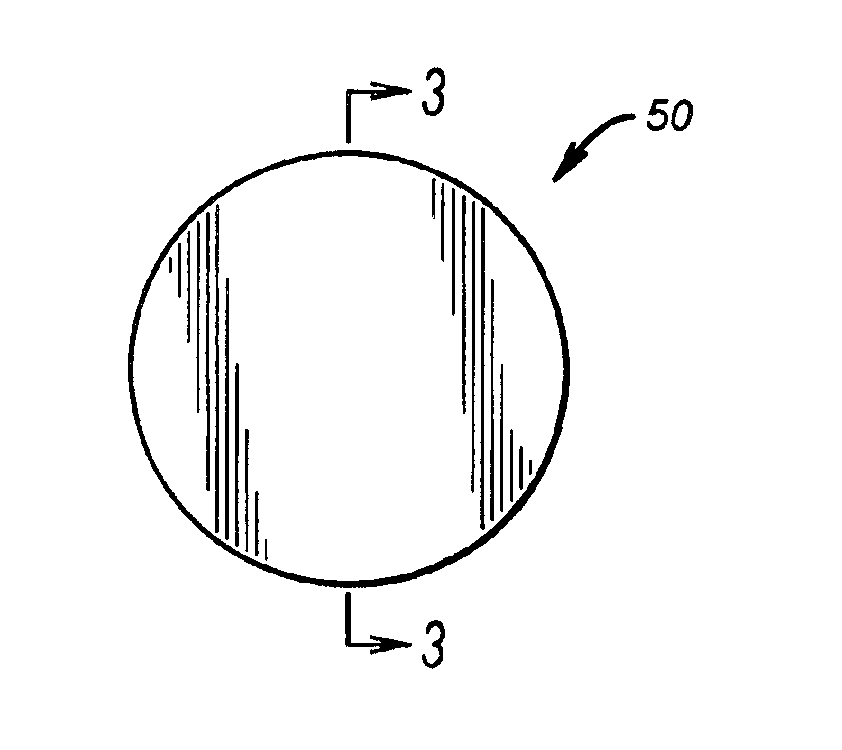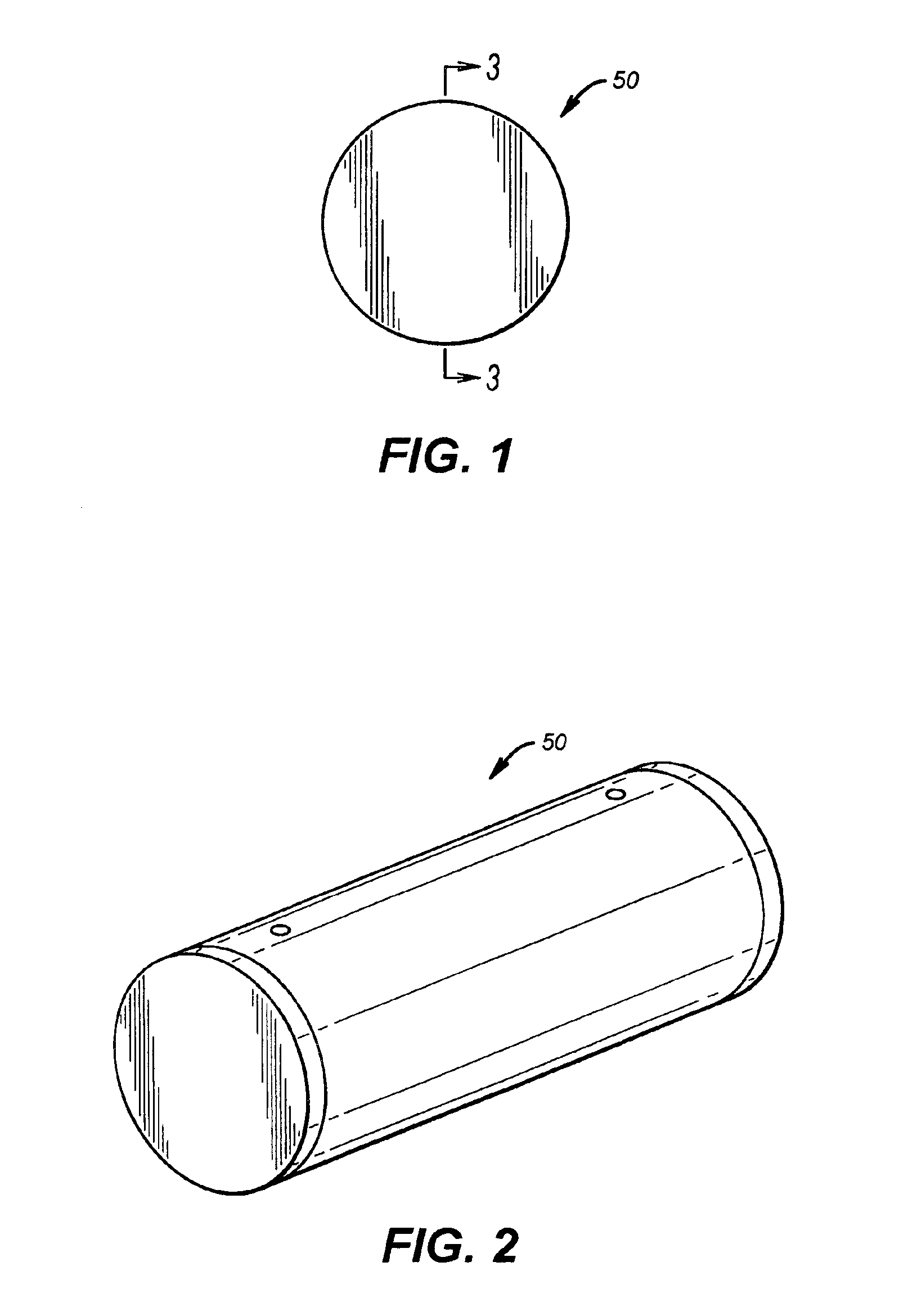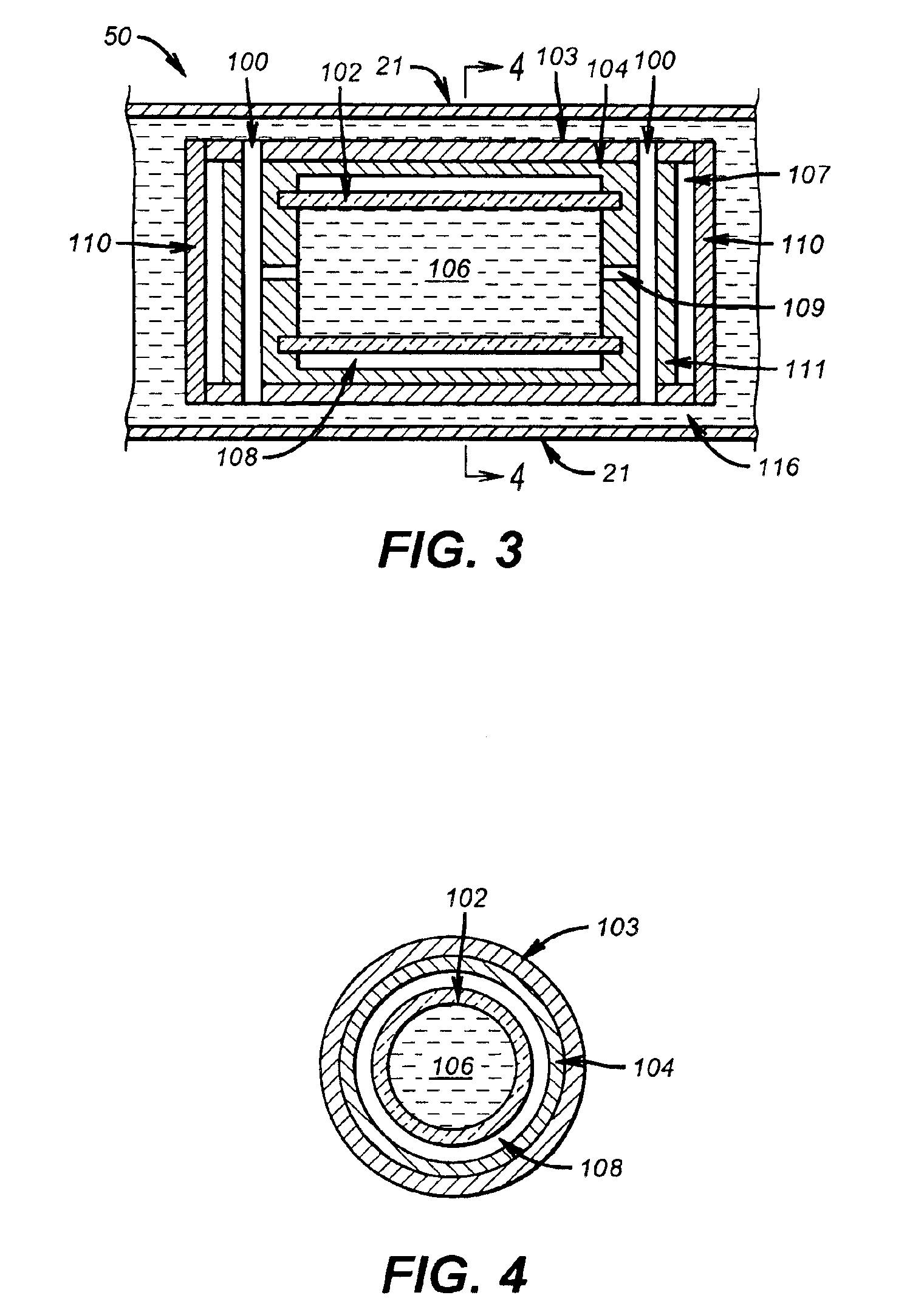Gel-filled seismic streamer cable
a streamer cable and gel-filled technology, applied in the field of gel-filled streamer cables, can solve the problems of large and more powerful towing vessels, lateral, shear, rayleigh and torsional waves, and other problems, to achieve the effect of reducing the risk of physical damag
- Summary
- Abstract
- Description
- Claims
- Application Information
AI Technical Summary
Benefits of technology
Problems solved by technology
Method used
Image
Examples
Embodiment Construction
Turning now to FIG. 1, a front view of the preferred hydrophone housing 50 is illustrated. As shown in FIG. 2, the preferred hydrophone housing 50 provides a circular cross-sectional area and a cylindrical shape in three-dimensions. Turning now to FIG. 3, a cross-sectional view of the preferred hydrophone streamer is shown illustrating the location of fluid pressure inlet 100, cylindrical piezoelectric hydrophone element 102, protective hydrophone casing 103 and hydrophone housing 104. Element 102 is placed inside of housing 104. Housing 104 is placed inside of protective hydrophone case 103.
Protective hydrophone casing 103 shields housing 104 from mechanical forces acting on the surface of the protective hydrophone casing 103. Housing 104 has faces 111 formed at each end of the housing 104. The protective hydrophone casing 103 is closed at each end with a disk 110 at each of its end faces. An air gap 107 is provided between each protective hydrophone casing end face disk 110 and ea...
PUM
 Login to View More
Login to View More Abstract
Description
Claims
Application Information
 Login to View More
Login to View More - R&D
- Intellectual Property
- Life Sciences
- Materials
- Tech Scout
- Unparalleled Data Quality
- Higher Quality Content
- 60% Fewer Hallucinations
Browse by: Latest US Patents, China's latest patents, Technical Efficacy Thesaurus, Application Domain, Technology Topic, Popular Technical Reports.
© 2025 PatSnap. All rights reserved.Legal|Privacy policy|Modern Slavery Act Transparency Statement|Sitemap|About US| Contact US: help@patsnap.com



